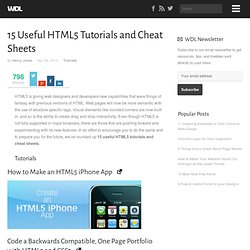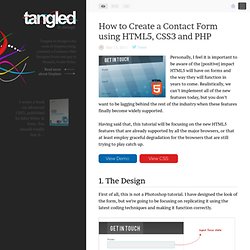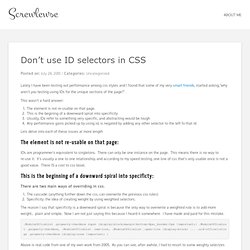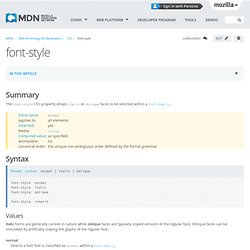

15 Useful HTML5 Tutorials and Cheat Sheets. 1911 shares 8 Must-have Cheat Sheets for Web Designers and Developers As a web designer or developer, it’s nearly impossible to remember multiple programming languages, frameworks, and keyboard shortcuts to various applications.

This is where cheat sheets can be a life saver. Most cheat sheets are designed to be printer friendly, so you can have them laying around on your desk as quick reference cards. So… Read More 2705 shares Photoshop CS6 Cheat Sheet Photoshop is one of the preferred tools of web designers, and like any other tool that is used over and over, it’s important to optimize one’s workflow by using keyboard shortcuts. Galleries. How to Create a Contact Form using HTML5, CSS3 and PHP. Personally, I feel it is important to be aware of the [positive] impact HTML5 will have on forms and the way they will function in years to come.

Realistically, we can’t implement all of the new features today, but you don’t want to be lagging behind the rest of the industry when these features finally become widely supported. Having said that, this tutorial will be focusing on the new HTML5 features that are already supported by all the major browsers, or that at least employ graceful degradation for the browsers that are still trying to play catch up. 1. The Design First of all, this is not a Photoshop tutorial. 2. Now we have a design to work towards, we’re going to form the structure of the contact form using HTML5.
Doctype Okay, now we’ve got our blank PHP document, let’s start with the appropriate doctype, which is a lot simpler in HTML5 than previous versions to say the least! <! Untitled Page. Build Internet. One page website. Once in a while, something new shows up that has the power to shake the world and stimulate all people to keep moving instead of stay still, this quote applies for practically every instance in life and business. A while ago, Nike released an astonishing website named “Nike Better World” to support all the athletes around the world; the design itself was brilliant and it generated a lot of positive reviews, but the real breakthrough came thanks to the navigation system that these guys made, a fantastic vertical Parallax system.
Soleil Noir 2012. Handpicked free fonts for graphic designers with commercial-use licenses. Don’t use ID selectors in CSS. Posted on: July 28, 2010 / Lately I have been testing out performance among css styles and I found that some of my very smart friends, started asking,”why aren’t you testing using IDs for the unique sections of the page?”.

This wasn’t a hard answer: The element is not re-usable on that page.This is the begining of a downward sprial into specificityUsually, IDs refer to something very specific, and abstracting would be toughAny performance gains picked up by using id, is negated by adding any other selector to the left fo that id Lets delve into each of these issues at more length The element is not re-usable on that page: IDs are programmer’s equivalent to singletons. This is the beginning of a downward spiral into specificty: There are two main ways of overriding in css. Taming Advanced CSS Selectors. Advertisement Meet SmashingConf San Francisco 2017, featuring front-end ingredients, UX recipes and design beats from the hidden corners of the web.

Only practical, real-life techniques that you can learn from. Get your ticket! CSS is one of the most powerful tools that is available to web designers (if not the most powerful). With it we can completely transform the look of a website in just a couple of minutes, and without even having to touch the markup. The best way to avoid these plagues spreading in your markup and keep it clean and semantic, is by using more complex CSS selectors, ones that can target specific elements without the need of a class or an id, and by doing that keep our code and our stylesheets flexible. CSS Specificity Link When we are writing our CSS we have to keep in mind that some selectors will rank higher than others in the cascade, the latest selector that we wrote will not always override the previous ones that we wrote for the same elements.
Useful links: 1. 2. Font-style - CSS. Summary The font-style CSS property allows italic or oblique faces to be selected within a font-family.

Initial value normal Applies to all elements Inherited yes Media visual Computed value as specified Animatable no Canonical order the unique non-ambiguous order defined by the formal grammar Syntax Formal syntax: normal | italic | oblique. CSS Reference - CSS. Style-rule ::= selectors-list { properties-list } ... where : selectors-list ::= selector[:pseudo-class] [::pseudo-element] [, selectors-list] properties-list ::= [property : value] [; properties-list] See the index of selectors, pseudo-classes, and pseudo-elements below. The syntax for each specified value depends on the data type defined for each specified property.
Style rule examples. Path. Path. Courses. Plans & Sign Up. Web design inspiration. Linear Gradients.